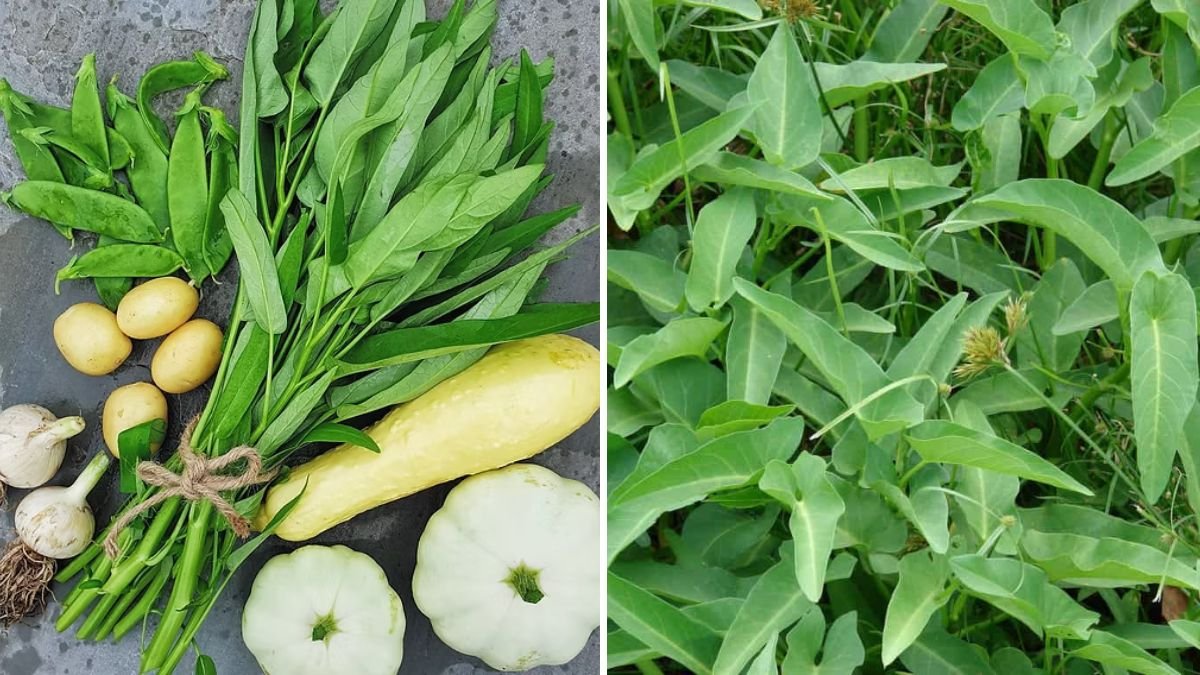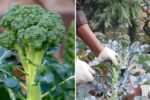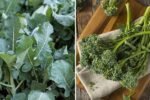Move over kale and spinach—there’s a new leafy green gaining attention across America’s kitchens and farmers’ markets: Kang Kong, also known as water spinach (Ipomoea aquatica). With its long, tender stems, delicate leaves, and mild flavor, Kang Kong is a culinary and nutritional powerhouse that’s long been a staple in Asian cuisine. Now, this vibrant green vegetable is making waves in the American food and wellness scene, thanks to its versatility, fast growth, and impressive health benefits.
From farm-to-table restaurants to backyard gardens, Kang Kong is fast becoming a favorite among chefs, nutritionists, and home gardeners. Whether stir-fried, sautéed, or steamed, this aquatic green adds a refreshing crunch and vibrant color to your meals while boosting your health with essential vitamins and minerals.
In this article, we’ll dive deep into the world of Kang Kong—exploring its origins, nutritional benefits, how to grow it in the U.S., and delicious ways to enjoy it in your everyday cooking.
1. What Is Kang Kong (Water Spinach)?
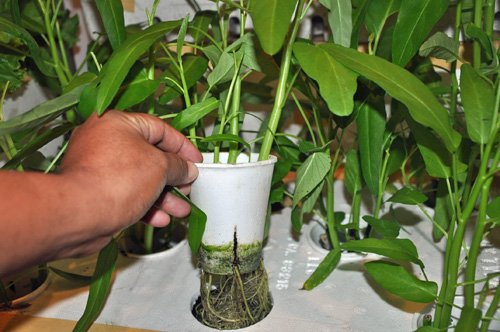
Kang Kong, also called water spinach, swamp spinach, or river spinach, is a tropical, semi-aquatic vegetable native to Southeast Asia. Despite its name, it’s not related to regular spinach, but rather to the morning glory family (Convolvulaceae). It thrives in warm, humid climates and grows abundantly in watery areas like ponds, ditches, and rivers.
In different cultures, Kang Kong goes by many names:
- Kangkong or Kangkung – Philippines, Indonesia, Malaysia
- Rau Muống – Vietnam
- Pak Boong – Thailand
- Ong Choy – China
- Water Spinach – United States
The plant features hollow stems and arrow-shaped leaves, which can be eaten cooked or raw. Its mild, slightly nutty flavor makes it one of the most versatile greens for soups, stir-fries, and salads.
2. The Rising Popularity of Kang Kong in America
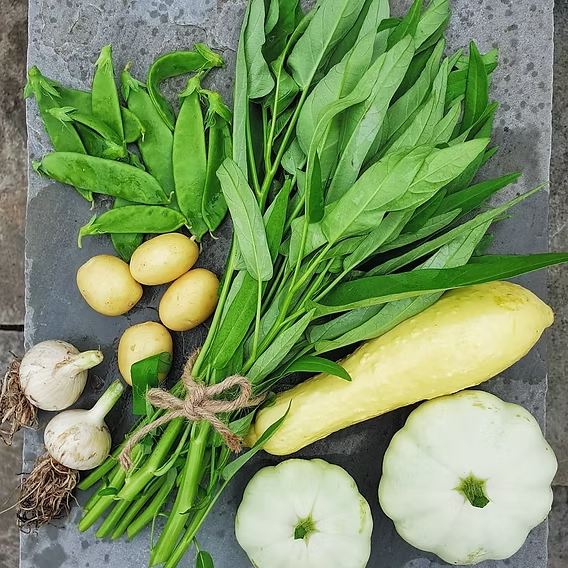
With America’s growing appreciation for global cuisines and plant-based diets, Kang Kong is becoming a star ingredient in Asian fusion restaurants and home gardens alike. It’s especially popular among Filipino-American, Vietnamese-American, and Thai-American communities, who have introduced its delicious recipes to new audiences.
Farmers in Florida, Hawaii, Texas, and California are now cultivating Kang Kong commercially, where the warm climate suits its growth perfectly. Local farmers’ markets and Asian grocery stores across the U.S. are beginning to showcase fresh bundles of this crisp green, often labeled “water spinach” or “Ong Choy.”
Kang Kong’s sustainability and ease of cultivation also make it attractive for urban and backyard gardeners. It grows fast, needs minimal maintenance, and yields abundant harvests—a great addition to the modern American garden.
3. Nutritional Profile: Why Kang Kong Is a Super Green
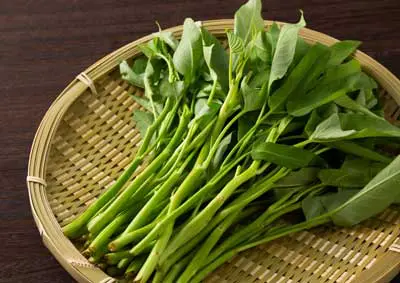
Kang Kong isn’t just delicious—it’s a nutrient-dense food that rivals kale, spinach, and Swiss chard. Here’s what makes it a true super green for American diets:
a. Rich in Vitamins and Minerals
Kang Kong is loaded with vitamin A, vitamin C, iron, calcium, magnesium, and potassium, which support eye health, bone strength, and overall vitality.
b. High in Fiber and Low in Calories
With its high fiber content and extremely low calorie count, Kang Kong is perfect for weight management and digestive health. A single cup provides a good dose of dietary fiber to keep you full and satisfied.
c. Packed with Antioxidants
Its leaves contain beta-carotene, lutein, and chlorophyll, which combat oxidative stress and promote healthy skin and aging.
d. Supports Heart Health
The potassium and magnesium in Kang Kong help regulate blood pressure, while its antioxidants improve circulation and reduce inflammation.
e. Promotes Healthy Digestion
The vegetable’s natural fiber aids digestion and helps maintain a healthy gut, making it ideal for people with sensitive stomachs or dietary restrictions.
With all these benefits, it’s no wonder that nutritionists are calling Kang Kong “the next big leafy green” in America’s health food scene.
4. How to Grow Kang Kong in the U.S.
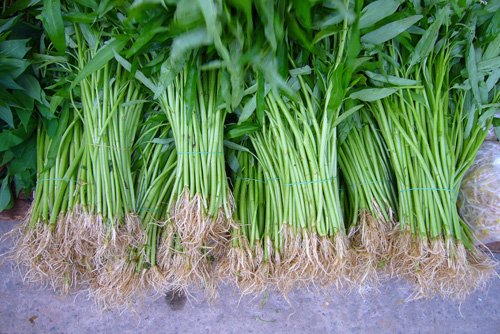
Growing Kang Kong is surprisingly easy, especially for gardeners in warm, humid regions. Its ability to thrive in both soil and water makes it a perfect crop for eco-friendly, sustainable gardening.
a. Ideal Conditions
- Temperature: Prefers warm climates (70°F–90°F).
- Sunlight: Needs full sun to partial shade.
- Soil: Moist, rich soil with good drainage.
- Water: Kang Kong loves water—keep soil consistently damp.
b. Planting Tips
- Start from seeds or cuttings. If using cuttings, simply place them in water until roots appear.
- Space plants about 10–12 inches apart.
- Water frequently to mimic a marshy environment.
c. Harvesting
Kang Kong grows rapidly—ready for harvest in just 30 to 40 days. Cut the young stems about 6–8 inches from the tip, and they’ll regrow multiple times throughout the season.
d. Indoor Growing
If you live in cooler regions like the Midwest or Northeast, grow Kang Kong in containers or hydroponic systems indoors. Place near a sunny window or under grow lights for the best results.
With minimal effort, you can enjoy a continuous supply of fresh greens right from your backyard or kitchen garden.
5. Delicious Ways to Cook and Enjoy Kang Kong

Kang Kong’s mild flavor and tender texture make it an excellent ingredient in a variety of American and Asian dishes. Here are some popular and creative ways to enjoy it:
a. Stir-Fried Kang Kong (Filipino Adobong Kangkong)
A quick and flavorful side dish made by sautéing Kang Kong with garlic, soy sauce, and vinegar. It pairs perfectly with rice or grilled meat.
b. Thai-Style Morning Glory (Pad Pak Boong Fai Daeng)
This famous Thai street food features Kang Kong stir-fried with garlic, chili, and oyster sauce—light, spicy, and full of umami flavor.
c. Water Spinach Soup
Add Kang Kong leaves to a clear broth with tofu, ginger, and mushrooms for a comforting and healthy soup.
d. Sautéed Kang Kong with Shrimp or Chicken
A simple yet satisfying dish: toss Kang Kong in olive oil with shrimp or chicken, seasoned with garlic, black pepper, and a splash of lime.
e. Kang Kong Smoothie (Yes, Really!)
Blend young Kang Kong leaves with green apple, pineapple, and a bit of honey for a refreshing, nutrient-packed green smoothie.
f. Kang Kong Salad
Toss blanched Kang Kong with tomatoes, sesame oil, and soy dressing for a fresh Asian-inspired salad that’s perfect for summer picnics.
Whether you’re cooking traditional Filipino adobo or experimenting with fusion cuisine, Kang Kong easily adapts to any flavor palette—from savory to spicy to sweet.
6. Kang Kong’s Sustainability and Role in American Gardens
In an era where Americans are embracing organic farming and sustainable living, Kang Kong fits right in. Here’s why it’s a sustainable star:
- Fast-Growing: It can be harvested multiple times in a single season.
- Low Maintenance: Requires minimal fertilizer and resists pests naturally.
- Water Efficient: Though it loves moisture, it can be grown hydroponically with recycled water.
- Zero Waste: Every part of the plant—stems and leaves—is edible.
For urban gardeners, Kang Kong is a dream plant. It can grow in pots, raised beds, or even water tubs. In community gardens and farm-to-table programs, it’s being celebrated as an easy-to-grow, nutritious, and eco-friendly green.
7. Cultural Significance and Global Appeal
Kang Kong is more than just a vegetable—it’s part of culinary heritage across Asia. In the Philippines, it’s a comfort food staple; in Thailand, a fiery street dish; in Vietnam, a light and elegant side served with rice. Now, it’s gaining recognition in the U.S. for its versatility and health profile.
American chefs are incorporating Kang Kong into modern menus, using it in ramen bowls, tacos, sandwiches, and vegan dishes. Its mild flavor allows it to complement both Western and Asian-inspired recipes, bridging global cultures through food.
8. Final Thoughts: Why Kang Kong Deserves a Spot in Your Kitchen and Garden
Kang Kong (water spinach) is the kind of vegetable that checks all the boxes—nutritious, delicious, sustainable, and easy to grow. Whether you’re a health-conscious eater, a home gardener, or an adventurous cook, this vibrant green offers endless benefits and culinary potential.
As America’s food scene continues to celebrate global diversity and plant-based living, Kang Kong is poised to become a household favorite. It’s not just an exotic import—it’s a future American staple, loved for its flavor, nutrition, and eco-friendly growth.
So, the next time you’re browsing your local farmers’ market or planning your home garden, make room for Kang Kong. It’s the green that nourishes your body, delights your taste buds, and connects your plate to cultures around the world.
